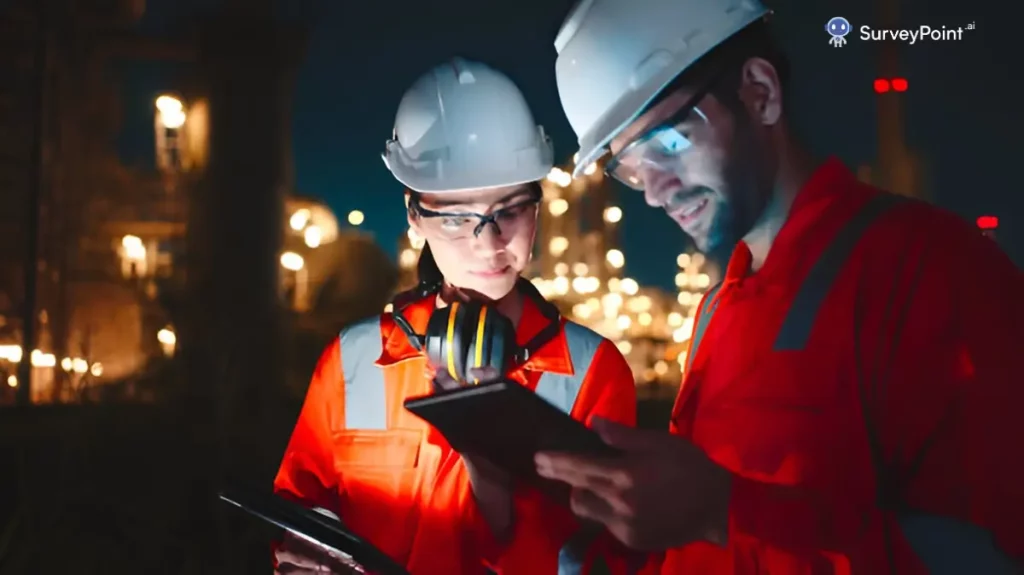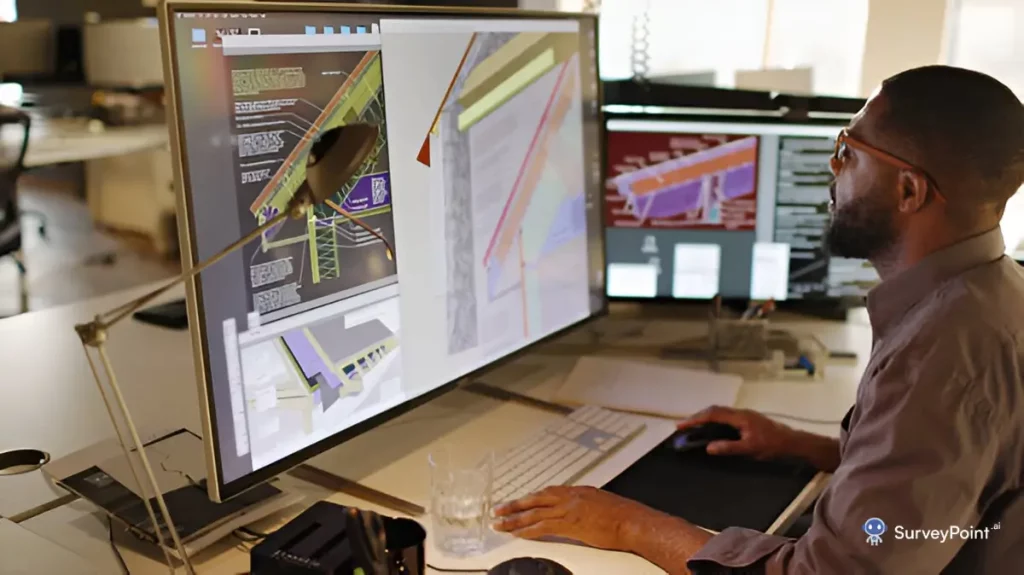
Are you ready to become a pro at construction site surveys? Whether you’re a seasoned contractor or just starting out in the field, mastering site surveys is crucial for project success. In this guide, we’ll walk you through everything you need to know to conduct top-notch site surveys that will impress your clients and set your projects up for success.
Why Construction Site Surveys Matter
Let’s face it – construction projects can be a real headache. From unexpected delays to budget overruns, there’s always something that can throw a wrench in your plans. But here’s the good news: many of these issues can be avoided with a thorough site survey.
A site survey is like a detective’s investigation of your construction site. It helps you uncover potential problems before they become costly mistakes. By doing a proper survey, you can:
1. Spot potential hazards
2. Plan your project more accurately
3. Save time and money
4. Keep your team safe
5. Avoid legal troubles
Now that you know why site surveys are so important, let’s dive into how to do them right.
The Essential Tools for Construction Site Surveys
Before we get into the nitty-gritty of conducting a survey, let’s talk about the tools you’ll need. Having the right equipment can make your job a lot easier and more accurate. Here’s what you should have in your toolkit:
1. Measuring tape or laser distance meter
2. Camera (your smartphone will do)
3. Notepad and pen (or a tablet for digital notes)
4. GPS device
5. Safety gear (hard hat, safety vest, steel-toe boots)
6. Survey software (optional but helpful)
With these tools at your disposal, you’ll be well-equipped to tackle any site survey.
Step-by-Step Guide to Conducting a Construction Site Surveys

Now, let’s break down the process of conducting a site survey into manageable steps. Follow these, and you’ll be surveying like a pro in no time!
Step 1: Do Your Homework
Before you even set foot on the site, do some background research. Look up:
- Zoning regulations
- Property boundaries
- Existing utility lines
- Historical data about the site
- Weather patterns in the area
This information will give you a head start and help you know what to look for when you’re on-site.
Step 2: Walk the Site
Once you’re on-site, take a slow, careful walk around the entire area. Pay attention to:
- The lay of the land (slopes, hills, valleys)
- Existing structures or obstacles
- Vegetation and wildlife
- Access points for vehicles and equipment
- Potential safety hazards
Take lots of photos and notes during this step. You might think you’ll remember everything, but trust us – you won’t!
Step 3: Take Accurate Measurements
This is where your measuring tools come in handy. Measure and record:
- The dimensions of the site
- Distances between key points
- Heights of existing structures
- Depths of any excavations or bodies of water
Be as precise as possible – even small errors can lead to big problems down the line.
Step 4: Check for Utilities
Hitting an underground utility line is a nightmare scenario for any construction project. To avoid this:
Contact local utility companies for information
Use utility locating services if necessary
Mark the locations of all utility lines on your site plan
This step can save you from costly repairs and dangerous accidents.
Step 5: Assess Soil Conditions
The type and quality of soil on your site can have a big impact on your project. Look for:
- Signs of erosion
- Areas of standing water
- Different soil types across the site
- Potential contamination
You might need to bring in a geotechnical engineer for a more detailed soil analysis.
Step 6: Consider Environmental Factors
Don’t forget about the environment! Take note of:
- Local wildlife habitats
- Protected plant species
- Wetlands or water sources
- Potential noise pollution issues
Being aware of these factors can help you avoid environmental violations and keep your project eco-friendly.
Step 7: Document Everything
As you go through these steps, document everything thoroughly. This includes:
- Detailed notes
- Lots of photos (with timestamps and location data if possible)
- Sketches or diagrams
- GPS coordinates of key points
The more information you gather, the better prepared you’ll be for the next phase of your project.
You Must Knwo
Sip & Share: Coca Cola Customer Service Survey Revealed 2024
Top 12 Food Truck Survey Questions for Success

Common Mistakes to Avoid in Construction Site Surveys
Even experienced surveyors can make mistakes. Here are some common pitfalls to watch out for:
1. Rushing the process: A thorough survey takes time. Don’t try to cut corners!
2. Ignoring weather conditions: Bad weather can affect your measurements and observations. Plan your survey for a day with good weather if possible.
3. Forgetting about seasonal changes: A site can look very different in summer versus winter. Consider how seasonal changes might affect the project.
4. Not involving the right experts: Sometimes you need to bring in specialists like geologists or environmental experts. Don’t hesitate to ask for help when you need it.
5. Neglecting to check historical data: Past uses of the site can impact your current project. Always look into the site’s history.
6. Failing to communicate with stakeholders: Keep your team and clients in the loop about what you find during the survey.
By avoiding these mistakes, you’ll be well on your way to conducting top-notch site surveys.
Using Technology to Improve Your Construction Site Surveys
In today’s digital age, there are lots of high-tech tools that can make your site surveys more accurate and efficient. Consider using:
1. Drones for aerial surveys
2. 3D scanning technology
3. GIS (Geographic Information System) software
4. Mobile apps for data collection
5. Cloud-based collaboration tools
While these technologies can be a big help, remember that they’re no substitute for good old-fashioned observation and experience.
Turning Your Survey into Action
So you’ve done your survey – now what? Here’s how to turn all that information into actionable insights:
1. Create a detailed site plan: Use your measurements and observations to create a comprehensive map of the site.
2. Identify potential challenges: Based on your survey, what obstacles might you face during construction?
3. Develop mitigation strategies: For each challenge you’ve identified, come up with a plan to address it.
4. Adjust your project timeline and budget: Use the insights from your survey to make your project estimates more accurate.
5. Share your findings: Make sure all stakeholders are aware of what you found during the survey and how it might impact the project.

FAQs: Construction Site Surveys
Question: What is a construction site survey?
Answer: A construction site survey is a detailed examination and documentation of a site’s existing conditions before construction begins. It includes gathering data on topography, boundaries, utilities, and other relevant features.
Question: Why are construction site surveys important?
Answer: They’re crucial for accurate project planning, identifying potential issues, ensuring legal compliance, and providing a baseline for design and construction work.
Question: How often should construction site surveys be conducted?
Answer: Typically, a comprehensive survey is done before project initiation. Additional surveys may be needed during construction for large or complex projects, or if significant changes occur.
Question: What types of information are gathered during a construction site survey?
Answer: Surveyors collect data on topography, property boundaries, existing structures, utilities, soil conditions, vegetation, drainage patterns, and any environmental or regulatory constraints.
Question: Who typically performs construction site surveys?
Answer: Licensed land surveyors or professional surveying firms usually conduct these surveys. They may work with other specialists like geotechnical engineers or environmental experts.
Question: How long does a construction site survey take?
Answer: The duration varies based on site size and complexity. It can range from a few hours for small sites to several days or weeks for large or complex sites.
Question: What equipment is used in construction site surveys?
Answer: Common tools include total stations, GPS equipment, 3D laser scanners, drones for aerial surveys, and specialized software for data processing and analysis.
Question: How do construction site surveys impact project planning and budgeting?
Answer: They provide crucial data for accurate cost estimation, identifying potential challenges, and informing design decisions, which helps prevent costly surprises and delays during construction.
Question: Are there any legal requirements for conducting construction site surveys?
Answer: Requirements vary by location, but many jurisdictions require surveys for property transactions, building permits, and zoning compliance. Always check local regulations.
Question: How can technology improve the accuracy and efficiency of construction site surveys?
Answer: Advanced technologies like LiDAR, photogrammetry, and Building Information Modeling (BIM) integration can increase accuracy, speed up data collection, and provide more detailed 3D visualizations of site conditions.
Wrapping Up: Construction Site Surveys
Mastering the art of construction site surveys takes time and practice, but it’s a skill that will serve you well throughout your career. By following the steps outlined in this guide and staying alert to potential issues, you’ll be able to conduct thorough, accurate surveys that set your projects up for success.
Remember, a good site survey is the foundation of any successful construction project. It helps you avoid surprises, keep your team safe, and deliver results that will make your clients happy. So get out there, put these tips into practice, and watch your projects thrive!

